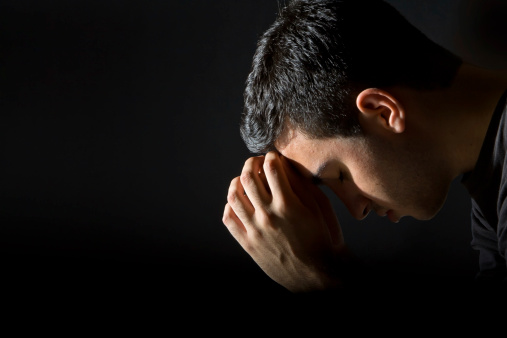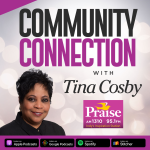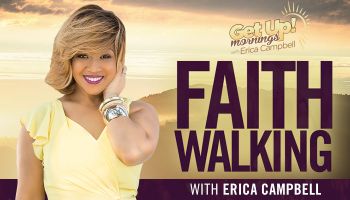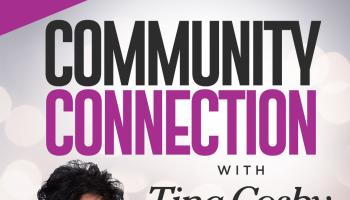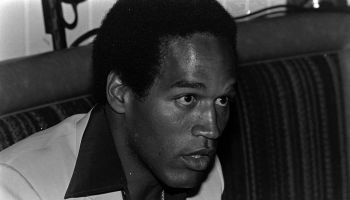According to The BelleReport.com
Museum would sing praises of gospel
Facility would open this fall in birthplace of rhythmic religious music
 A South Side minister is hoping to create a museum to honor Chicago’s gospel music heritage in Bronzeville, the neighborhood credited with the music’s birth 80 years ago.
A South Side minister is hoping to create a museum to honor Chicago’s gospel music heritage in Bronzeville, the neighborhood credited with the music’s birth 80 years ago.
The museum is the dream of the Rev. Stanley Keeble, who is pulling from his personal financial reserves in hopes of opening it on Oct. 26. That would have been the 99th birthday of Mahalia Jackson, gospel’s greatest star, who made Chicago her home at age 16.
A number of others in the music community support Keeble’s efforts to call attention to such people as the man who put gospel on the map: Chicagoan Thomas Dorsey, a blues pianist, composer and later reverend. He took the fervency of the rhythm and blues he played Saturday night at the clubs to the church choirs he conducted Sunday morning.
Gospel’s instrumentation and vocal techniques influence popular music to this day, said Bob Marovich, a board member who has been gathering gospel recordings for 20 years and who will add his collection to the one that Keeble has been assembling for eight years.
“[Chicago] was the epicenter of gospel music. To not have a museum here is not to give witness to what happened in the ’30s that influenced American popular music” said Marovich, who is helping curate the memorabilia. “I think it would be an outstanding tourist attraction and a must-have for the city.”
The Chicago Gospel Music Heritage Museum will be housed in a modest 1,000-square-foot house owned by and adjoining the Metropolitan Apostolic Community Church, 4108 S. King Drive. Keeble said published reports that he raised $1 million are untrue and that the museum does not yet have a budget or full-time staff. He needs fundraisers to step forward and he said he is revamping the board of directors to help in that effort.
“I’m sure we will open in October, because once people find out this museum is actually in existence and the mere fact that I want to have an opening on Mahalia Jackson’s birthday … I’m sure we’ll be able to get a great deal of support,” Keeble said.
The Chicago Board of Tourism will promote the museum once it opens, said manager of communications Karen Vaughan. It “is exactly the kind of thing we would put up” on its Web site, explorechicago.com.
“We’re aware of it and we are excited about it,” Vaughan said. “A big part of the attractions in the city are our neighborhoods so it definitely fits into that part of our mission.”
Keeble, 73, spends his life in gospel music. As an English teacher at Calumet High School, he helped design and implement a gospel music course into the city’s school curriculum that still is used. He is a recording artist and pastor who worked alongside the music’s best-known innovators: Sallie Martin, Roberta Martin, the Rev. James Cleveland and Magnolia Butts.
“I knew all of them and I worked with all of them,” he said.
His associations benefited his collection, which includes robes and uniforms worn by local gospel groups, as well as an extensive library of recordings on 78 and 45 rpm records he plans to transfer to CD.
Marovich’s stash includes about 15,000 songs, and he collects sheet music and song folios from the era. Gospel recordings of the early to mid-20th century often had limited pressings and were sold predominantly at churches, he said, making their discovery decades later a challenge that requires eBay searches and random digs at thrift stores.
“It’s absolutely a bottomless well. We’ll probably never know how many gospel records are out there,” he said.
Marovich is writing a book about Chicago’s gospel music roots and spins his collection on “Gospel Memories,” a weekly radio program airing 10-11 a.m. Saturdays on WLUW-FM 88.7.
Dorsey was where it began. Before he started playing in Chicago’s black churches around 1930, their services were more formalized.
“Churches in the early 1900s were busy emulating white folk, singing European classical anthems” or “Negro spirituals sung in the classical tradition,” said gospel historian L. Stanley Davis. Dorsey, who coined the term “gospel” in 1930, “brought more sophistication.”
“He brought a fusion — Anglo-Saxon Protestant hymns plus blues,” said Davis. “I call that the common man’s vernacular. People could understand that.”
Dorsey encountered resistance in the early days from those who thought the music was too secular and that instruments such as the piano didn’t belong in church.
“It was very unusual even in those days to have a piano,” said Carren Moham, associate professor of music at Illinois Wesleyan University in Bloomington. “A lot of times, the congregation would be the choir; you would have the leader and the congregation would join in, but the idea of a choir getting up to sing, Dorsey did that. He would organize groups to sing his songs. He was actually forming the beginning of what we know as the gospel choir.”
Dorsey’s unique brand of music went national when he helped create the National Convention of Gospel Choirs and Choruses in 1933, the year of the Century of Progress world’s fair, which was a fortuitous marketing decision. People streaming into Chicago for the fair could easily happen into the Pilgrim Baptist Church to hear the music. If so moved, they were then taught how to play it, how to sing it and how to direct it, said Davis.
As the composer of thousands of songs — such as “Precious Lord, Take My Hand” and “Peace in the Valley” that have been translated into many languages and sung around the world — he created a enduring songbook that the convention spread further and wider each year.
The group “was important because it was a testing ground for new composers of gospel music to try out their work,” said Horace Maxile Jr., associate director of research at the Center for Black Music Research at Columbia College. “People came from all over the country and they learned the music they heard and would have something as tangible as sheet music to take back with them. From then, gospel spreads and becomes a national phenomenon.”
Weekly radio broadcasts also helped spread gospel and continue today at churches such as Greater Harvest Baptist Church, 5141 S. State St., and First Church of Deliverance, 4301 S. Wabash Ave. In 1980, an annual gospel music festival took the music out of the church and put it before the greater public.
Before then, said Davis, one of the festival’s originators, “no one had taken gospel outdoors. I could not understand how they could have Chicago Fest on Navy Pier and not one note of gospel was performed,” he said. The first festival at the Petrillo Music Shell held 365 singers and 27 musicians at once.
Chicago‘s contemporary gospel scene is healthy and diverse, having traveled far outside the South Side into outer ring suburbs and beyond. There are now community choirs, church choirs, children’s choirs, interfaith choirs and performances in venues ranging from synagogues to Symphony Center.
Keith Hampton, artistic director and founder of Chicago Community Chorus, said he is often asked to organize or conduct gospel choirs at colleges with predominantly white student populations.
“The music seems to capture the heart, soul and spirit of the person,” he said. “They really embrace that music because it makes people feel good but it also administers to the fact that people, particularly in this day and time, are going through very difficult issues. People find this music comforting.”
Keeble hopes his museum will capture the music’s potency, especially for a younger generation that may not realize the struggle to bring it to life, especially in the civil rights era, when traveling gospel groups routinely faced violence in the South.
“We were constantly praying because we were doing our traveling at a time white men in the South didn’t have any problem pulling black men out of the car and killing them,” he said. “I survived, and one of the reasons I am so determined is so these young people realize that sacrifices that had to be made in order for gospel music to still be in existence. Too many people have made so many sacrifices to have it just die out.”
